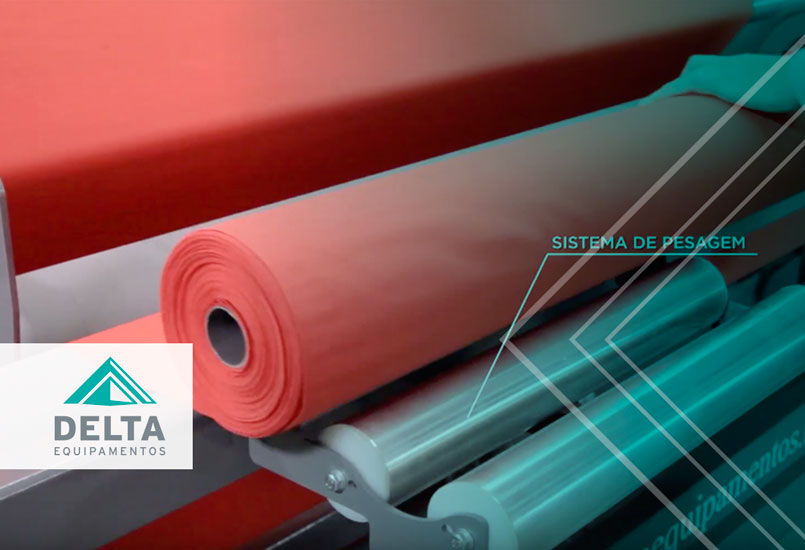Did you know that the lack of quality inspection carried out in the textile industry from the first stages of the processes can lead to several problems and losses?
In this article we will talk about the consequences of a poor inspection and we will also give tips to prevent them from occurring in your company. Check it out!
The importance of standardization in the textile industry
For an organization to become competitive in the market, it needs to be supported by productivity and the quality of the products provided.
Customers demand to acquire items with good durability, design, and affordable prices.
It’s a misconception to think that quality is limited to the final result.
It should be seen as a general philosophy within the company, so that the concern comes from the management, through the choice of suppliers, and the inspection already upon receipt of the material.
Although quality in the past was corrective—only carried out when the product was in shipping—now it is done already in the first stage, when the products arrive.
This is because, upon noticing that the final product was not satisfactory, it was often impossible to correct the identified defect, and thus the time of its production was lost.
With the modernization of the process, this no longer happens. Avoiding waste of meshes and losses.
+Learn more: Why is standardization in textile production important?
Characteristics to be observed for quality inspection
As soon as the mesh roll arrives at the industry, it is necessary to check for any manufacturing defects.
Standards from the Brazilian Association of Technical Standards (ABNT) help identify some problems according to the type of mesh.
This allows for a comparison between the technical sheet and the received raw material.
+Learn more: Textile quality control and mesh preparation
+Learn more: What is quality control? How does it work in the textile industry?
See some of the characteristics and properties that need to be checked:
Grammage
Grammage is the relationship of mass per unit area. It’s expressed in grams per square meter (according to ABNT NBR 10591) and helps determine whether the fabric is light, medium, or heavy.
In addition to facilitating meter checking in stock balances and allowing fabric yield calculations. The tolerance, according to standard NBR 13586, is ±5%.
Width
Width is a very important characteristic for defining pattern layout and is determined after fabric relaxation. According to CONMETRO Ordinance No. 1 of 1998, the tolerance is 2% (ABNT NBR 10589).
Linear Weight
A measure used to calculate the length of a fabric on a roll without the need to unwind the material (ABNT NBR 10591).
To measure linear weight, you need to perform the calculation:
g/m² x fabric width = linear weight
Shrinkage
Shrinkage is analyzed after washing and drying to check if there has been an increase or shrinkage in measurements.
By convention, a tolerance of 2% more or less is recommended, meaning that for a 5% shrinkage specification, results can range from 3% to 7%.
Tone
Color fastness refers to the change in color of the sample or the ability to transfer color to another fabric that does not have dye.
The evaluation also checks for fading, staining, and other issues.
It can also be tested to verify color fastness to rubbing, and tests can be done dry and wet.
The Brazilian standard NBR 10187 defines color fastness as:
“the resistance of the color of textile materials to different agents to which they may be exposed during their manufacture and subsequent use.”.
Color depends greatly on the quantities of dyes that will make up the final fabric color.
Furthermore, there are several variables that affect hue, including the dye used, the origin of the fiber, the twist variation of the yarns, moisture during fabric drying, among others.
For this reason, when checking color difference tolerances, the fabric roll or batches should not be mixed.
+Learn more: 5 benefits of adopting data collection in quality management
+Saiba mais: Advanced manufacturing in the Textile Industry. Quality control in the era of Industry 4.0
How the modernization of processes avoids poor quality inspection
With modern machinery, it’s possible to perform quality inspection at every stage of the process, avoiding all the problems that could occur and assessing the quality of the meshes upon receipt.

Upon receiving the goods, it’s possible to use a Sample Washer to conduct shrinkage tests and verify qualification according to technical specifications, including weight, shade, and other characteristics.
When the fabric is approved, it can go through the Reviewer, which generates a defect map, in addition to analyzing the compromise of the usable area and making physical analyzes of the quality standards per roll.
Relaxation can be performed through the Relaxer, which takes less than an hour to complete the procedure (traditional methods take about 24 to 48 hours). It also generates data on length, width, and side cutting area.
Finally, the meshes can be packed using an Automatic Roller Packer, which reduces plastic consumption and makes the process much faster and more efficient.
https://youtube.com/watch?v=qc_cAZFhDJU
With all the functions of the mentioned solutions, productivity increases significantly, while waste and failures decrease, as well as losses. Therefore, industries that wish to avoid problems caused by poor quality inspection should invest as soon as possible in the modernization of the manufacturing process.
If you are interested in the subject, check it out now what you should consider when choosing new machinery for industry!


![E-book]How to ensure quality control in the textile industry?](https://www.deltamaquinastexteis.com.br/wp-content/uploads/2019/04/ebook-como-garantir-o-controle-de-qualidade-na-industria-textil.jpg)
